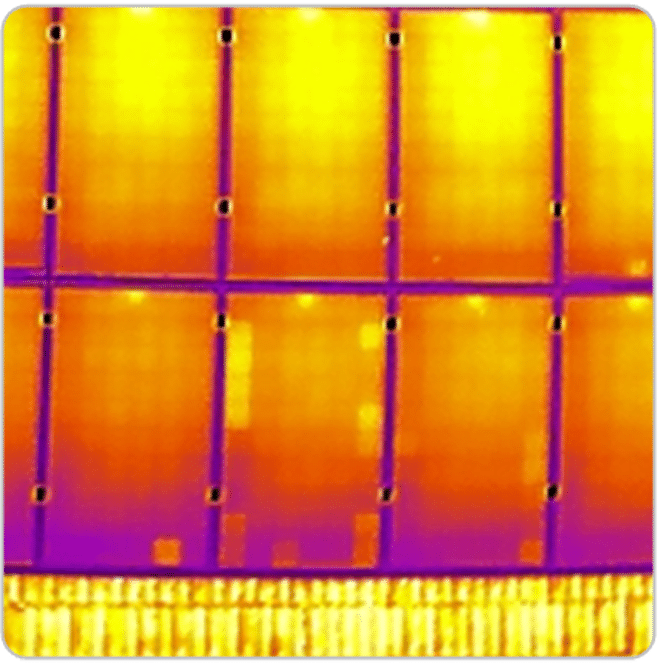Up to 30% power loss per affected module - Potential-induced degradation (PID)
PID – potential-induced degradation – is an insidious fault pattern in PV systems that leads to considerable yield losses. It occurs without visible damage, but can cause a drop in output of up to 30 % per affected module. Particularly insidious: PID often develops unnoticed – until thermography is carried out.
What exactly is a PID?
PID is caused by voltage differences between the solar cells and the earthed module frame. The result: leakage currents flow through the module – and lead to an internal power loss that increases over time.
But what are the factors that influence susceptibility to PID?
The structure of the solar cell, the materials used in the PV module and the system configuration determine, among other things, the susceptibility of a PV module to suffer from PID. Module manufacturers have the PID error pattern of today’s PV modules very well under control, but there are still a large number of older modules in the field that are affected by PID effects.
PID in thermography - this is what it looks like:
The thermal behaviour of PID is very different from that of classic hotspots.
The typical picture: Several modules in a string show progressive temperature deviations towards the centre of the string, starting from the module at the negative pole. The affected modules show a pattern of hotspots starting from the module edges. This fault is not a single anomaly; instead, several modules or entire strings are always affected.

Why is PID so treacherous?
Gradual loss of performance: Initially unnoticed – later drastic.
No visible damage: Only recognisable using aids such as thermography or electroluminescence.
Effect is partially reversible: however, it must be known that the system is suffering from PID.
Conclusion
Potential-induced degradation (PID) is an invisible efficiency killer. Only through regular maintenance and inspection, e.g. with the help of drone thermography, can the affected PV modules be identified in good time – and thus stop creeping degradation. This allows operators to take countermeasures in good time and minimise yield losses, as early detection of PID saves money – and ensures the long-term performance of the PV system.
📢 More interesting Insights?
🔗 Subscribe to the Photovoltaik Vision WhatsApp channel & newsletter!
Author and expert: Jan Wannenwetsch